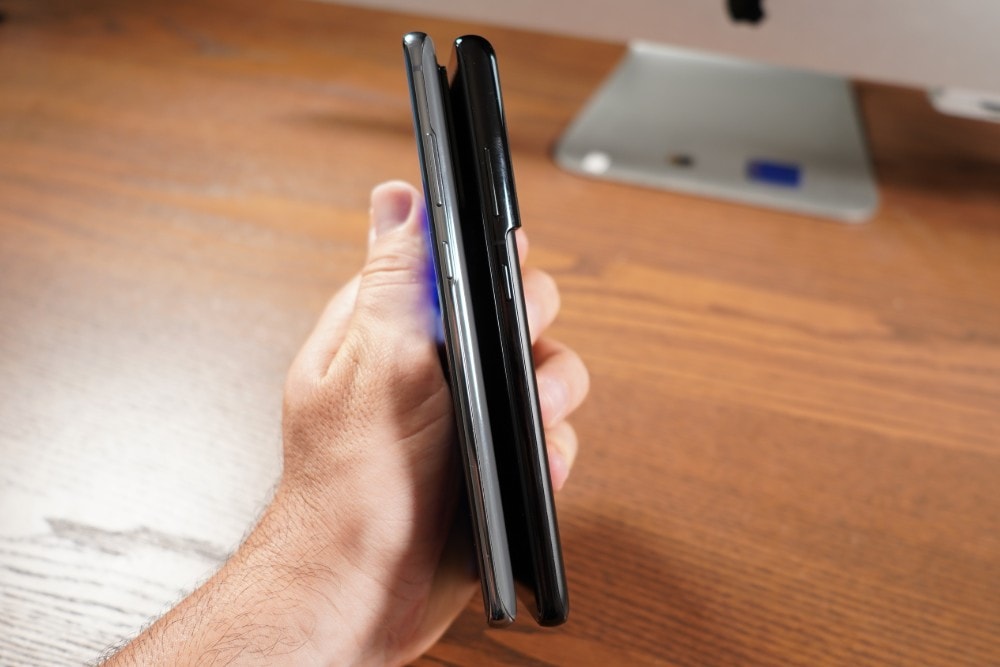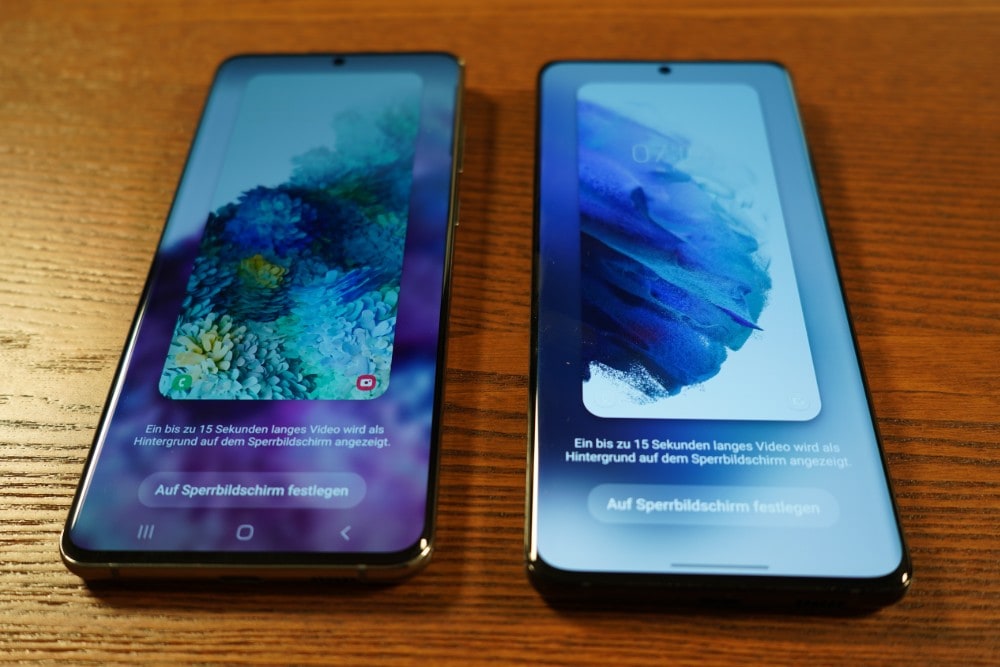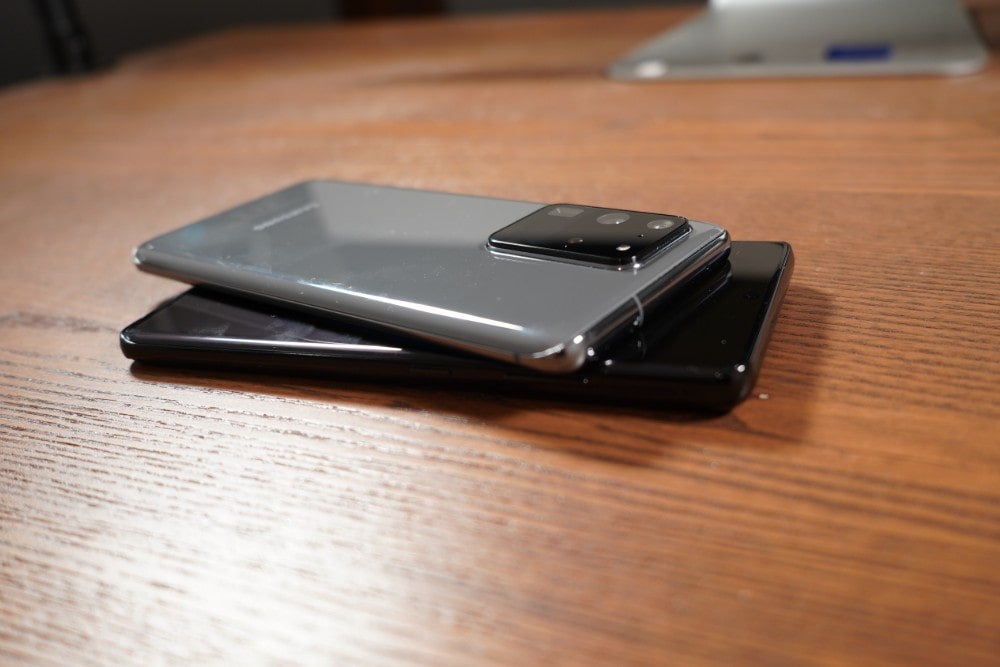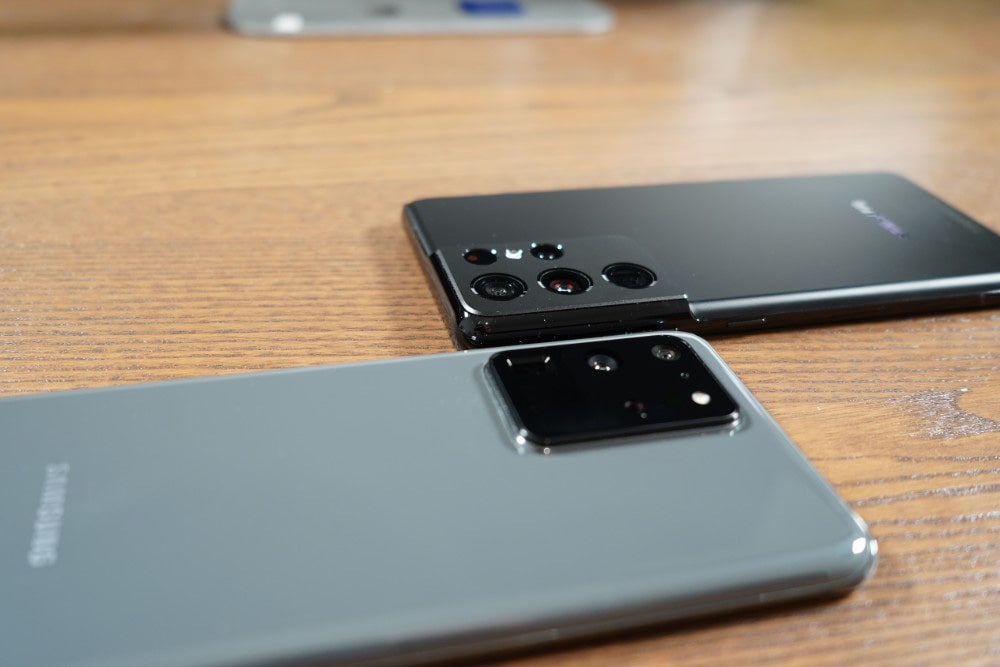It has been a while since Samsung has released its flagship S series and within it, its star, the Samsung S21 Ultra. There has been a lot of talk about how the new S21 Ultra is better than its predecessor and turns out, there is a lot to talk about. Everything from the design to the screen, the processor, the software has received a promotion. It is highly likely that you will want a promotion for your smartphone as well once you get to know about all the amazing features that the phone brings along.

The Big and the Apparent – The Design
So, one of the largest improvements that Samsung has made in the current year S series is the design. We were all kind of getting bored with the same type of designs and camera layouts over and over.
Samsung felt that and rolled out a completely new design throughout its lineup. The S21 Ultra features a top-to-bottom aluminum body. The back has a matte finish that avoids fingerprints that were typical of the glass-back S20 Ultra.

An even more interesting thing about the design is that you no-longer have to bear with the rather boring camera layout of the S20 Ultra. The camera module in the S21 Ultra is integrated with the aluminum frame and is itself made out of aluminum. The individual sensors in the module are embedded deep into the frame so unlike the S20 Ultra, you do not need to worry about scratching the glass and ruining your camera.
Last but not the least, the front is simple and houses an infinity-O display. Along the sides, the S20 and S21 both phones have dropped the curved-display idea. The edges are still rounded off a bit so that they are comfortable to hold and do not devour your fingers.

The Game of flashes and Colors – The Display
It would be injustice to call the displays on either of these phones as lacking or inappropriate in any aspect. In fact, Samsung has been making some of the best Super AMOLED displays for a long time now. Each of these phones feature a display that was top of the line in its time.
The S20 Ultra has a 6.9” Super AMOLED display that provides the highest resolution on a smartphone screen and brightens up to 1200 Nits. Not to forget, the high refresh rate of 120 Hz makes the whole experience buttery smooth and is feast for both the eyes and the mind.
There was not much wrong with the display on the S20 Ultra, it had the nice resolution, the high refresh rate and was protected by the Gorilla Glass 6. So, Samsung, did a few changes in the hardware, a little of tweaking with the software and created a complaint-free display to showcase on the Galaxy S21 Ultra.

Here’s what exactly what they did and why?
- The high refresh rate on the S20 was remarkable but you had to choose between the high resolution and the high refresh rate. You could not enable both at the same time. This was not much appreciated by the smartphone community and Samsung heard it. The S21 has the option to enable high refresh and high resolution both at the same time. It may drain your battery a little too fast but they have done something for that as well.
- High refresh means high power consumption which in turn translates into lower battery timings and yet you do not always need the high refresh rate. It is only beneficial when there is some movement on the screen. Samsung used it to their advantage in the S21 Ultra. The screen goes from refresh rates of 10Hz to 120Hz depending upon the activity on the screen. Now when you are on your home screen, you are not wasting it unnecessarily but saving for a longer battery backup.
- They have also upscaled the brightness to 1500 Nits from the S20’s 1200 Nits. It means that you do not need to worry about bright surroundings. Go out on a desert safari in the Emirates with your S21 Ultra and it has everything you need to enjoy your journey in the scorching sun.
- The S21 Ultra also houses an in-display fingerprint scanner just like in the S20 Ultra. However, it is more secure and reliable than before.
The screen size is a tiny bit smaller than the S20 brethren and has been reduced to 6.8” in S21 Ultra rather than the former 6.9”.

The eagle-sharp eyes – The Camera
Samsung’s Galaxy S series has always been famous for taking incredible photos. In fact, the S series flagships are always compared with the top tier iPhone of the time and no less (iPhones are also considered incredible for shooting videos and taking snaps, rather they are the benchmark). A lot of it has to do with the hardware and much more with the software that processes the image.
The S20 Ultra was a tremendously good phone overall. However, Samsung was particularly confident on its cameras. The entire product description for the S20 Ultra on Samsung’s website is about the quad-camera setup housed in the rectangular module on the phone.
How many camera sensors does the S20 Ultra have?
A total of 4 sensors on the back including a 108MP primary lens, a 12MP ultrawide and a 48MP periscope lens for taking the 100X zoom shots that Samsung kept bragging about for an entire year. On the front, it has a 48MP selfie camera that takes beautiful photos. Not to forget, the very smart AI that Samsung implements on its cameras which takes photos from just-another-camera-sensor in the market and converts them into top-tier shots in the industry.
Not many but there were slight criticisms on this camera system:
- It might seem a bit blunt but Samsung has overworked itself with the 100X zoom. As a company, Samsung might have a spent a lot of time in making the 100X zoom possible. Iterations over iterations of algorithms and rapid-testing of different sensors takes a lot of time and effort.
However, from a user’s perspective, how often do you actually use a 100X zoom? A lot of times, you are just using the primary camera and the standard frame. Then there are other times, when you might open up the ultrawide and the macros and rare other, when you actually use more than 50X zoom, perhaps to read a sign far away. Point is not very everyday stuff. - Another aspect of the overdoing the zoom was that of all features, the feature we are discussing was written on the back of the phone, while the 50X or 100X images that it captures were not really useable.
- Some people also noticed instances when the software tweaked with the images to make the skin tones lighter or the edges blurred when taking closeup shots. There were also problems with the auto-focus and the night mode.

The S21 Ultra, just like in other areas, brought improvements to the camera section and today stands as the most remarkable and refined camera setup on any Android device. This phone took the already pretty-good camera setup to a marvelous one. Just like the predecessor, the S21 Ultra has a 108MP primary sensor and a 12MP ultrawide. Here’s where things get interesting:
- Instead of one, they included two zoom sensors, a 10MP telephoto lens with 3X optical zoom and another periscope lens with 10X optical zoom. This solved the previous year problems of ‘ok’ zoom photos and turned them into ‘remarkable’.
- The software seemed to be failing on the focus area so Samsung said “you know what let’s include another sensor” and they included a Laser focus sensor on the camera module. The focus ever since has been crystal clear.
- The overall dynamic range of the shots has improved and the night mode is much better at rolling out gorgeous night-time photos.
Apart from these, there have been many other big and small tweaks in software that have changed the S series’ camera status from remarkable to industry-leader.
On the videography side of things, both phones can shoot 8K footage at 24fps and 4K footage at 60fps, though that is going to eat up your memory pretty fast.

The brawn and the brain – Processor and stuff
It has been a while since Samsung started doing the thing when it rolled out same models with Qualcomm and Exynos chipsets in different markets and regions. The S20 Ultra featured either a Snapdragon 865+ or an Exynos 990 and the S21 Ultra housed a Snapdragon 888 or an Exynos 2100.
Conventionally, the Snapdragon processors have always been better than the Exynos ones and so was the case with the S20 Ultra. However, Samsung has invested a lot of effort in the Exynos 2100 and it overall feels a lot smoother and faster as compared to previous versions. Samsung is really trying to close the gap between the performance of the two chipsets.
All of these chipsets are 5G capable and although your region may or may not have 5G just yet, your phone will be ready to handle the lightening fast speeds. Apart from that, the processors have the nerves to bear long sessions of high-res high-refresh gaming and provide a fair battery backup as well.
Both of these phones currently run on the Android 11 and come on options of 12/16 GB of RAM and 128/256/512 GB of internal storage. The S20 Ultra had the option for expandable storage for up to 1TB. Sadly, the privilege has been snatched away in favor of an all-time dual SIM slot instead of a hybrid one.

The jokes – The Battery
Both the phones feature a 5000 mAh battery that is fairly sufficient for a phone of this grandeur. You get the option of Wireless Powershare via which you can charge different wireless devices such as the Galaxy buds or your smartwatch. Alongside that, you also have the option to wirelessly charge your phone at 15 Watts.
Now it is time for the jokes:
- Remember when Apple decided that we do not want to include a charger in the box and all manufacturers made of the so-called ‘eco-friendly’ approach. Yeah, Samsung ridiculed it too. Well, Samsung then realized that it should do the same as well.
And here you are, you are not going to find a charger in the S21 Ultra box. However, you will find a 25 Watt one in the S20 Ultra, which brings on to our next joke. - People bought the Samsung flagship S20 Ultra for more that $1300 and it had fast-charging support for up to 45 Watts. The charger they shipped in the box was 25 Watts. More than $1300 spent, you still need to buy a new charger for the maximum charging speed and the upcoming year, they decided to exclude the charger in all.
- If we look at rest of the industry, brands like OnePlus, Oppo and Xiaomi have introduced massive wired charging speeds of even over 100 Watts. Another Chinese manufacturer, Infinix, recently showed off a phone that could charge from Nought to 100 in just 10 minutes.
On the other hand, Samsung had a bit of a motion sickness and decided 45 Watts is way too fast for us. Let’s keep it to 30 Watts in future and there you go. The S21 Ultra has a slower charging speed that its predecessor. Great improvement, right?
Criticisms apart, both of these phones will provide a sufficient battery timing and you will not have any worries getting through the day in a single charge.
How much?
You can get the S20 Ultra 128GB version at $1399 and with 512GB storage option at $1599. However, you might be able to find some discounted ones on Amazon or some other marketplace.
Probably the best thing about the S21 Ultra is that its cheaper, not exactly that cheaper but for less than the S20 predecessor. The 128GB version costs around $1200, the 256GB $1249 and the $512GB at $1379.
In the nutshell…
Both of these devices are pretty promising with regards to the diversity of features and the reliability of their performance and are good value for money.

Frequently Asked Questions
Do these phones provide S-pen support?
The S-pen support was originally limited to the Samsung’s Note series. However, the S21 Ultra is the first phone to provide the S-pen support outside of the Note lineup. Though, you will need to buy the pen and a compatible case separately.
Is it worth upgrading from S20 Ultra to S21 Ultra?
The S21 Ultra has some considerable improvements over the S20 Ultra. Still, it is a perfectly suitable phone even after one year. So, it comes down to ‘how bored you are of your S20 Ultra’. S21 is pretty promising if you are looking for a better design.
Is S21 Ultra worth the price?
The entire S21 Ultra lineup was introduced at a lower rate than the lowest S20 Ultra version. So, yes. It is good value for money and a brilliant phone to have.
